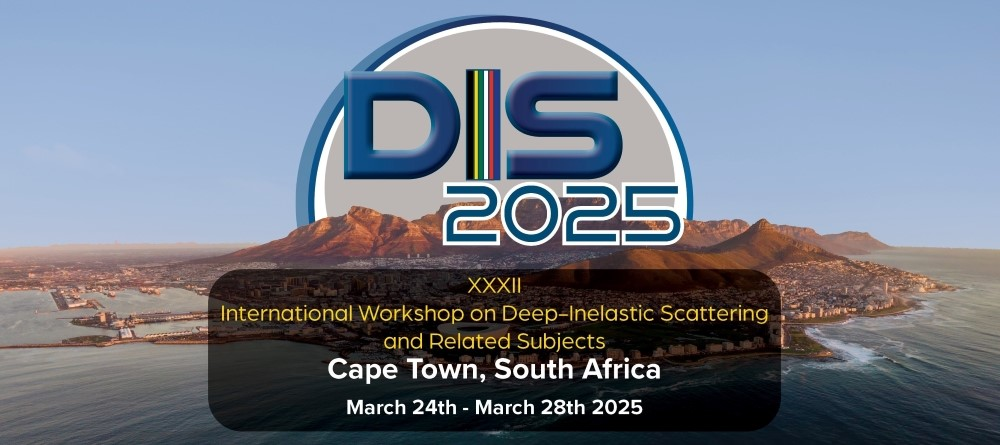Conveners
WG5: Spin and 3D Structure: WG5: Session #1
- Wenliang Li (Mississippi State University (US))
WG5: Spin and 3D Structure: WG5: Session #2
- Wenliang Li (Mississippi State University (US))
WG5: Spin and 3D Structure: WG5: Session #3
- Wenliang Li (Mississippi State University (US))
WG5: Spin and 3D Structure: WG5: Session #5
- Wenliang Li (Mississippi State University (US))
WG5: Spin and 3D Structure: WG5: Session #6
- Wenliang Li (Mississippi State University (US))
COMPASS is currently the longest-running experiment at CERN, having collected physics data for a record-breaking 20 years from 2002 to 2022. The experiment has a unique and diverse physics program focused on nucleon structure and spectroscopy measurements.
The experimental results obtained by COMPASS during its two phases (2002-2011 and 2012-2022, respectively) for a wide range of quark...
Approximately fifty years ago, the polarization of $\Lambda$ hyperons produced in unpolarized proton-beryllium collisions was discovered, though the origin of this phenomenon remains elusive. Many studies indicate that final-state effects, particularly from hadronization, play a significant role. Recently, it has been proposed that spin correlations of $\Lambda$ hyperons could provide insight...
We present NNPDFpol2.0, a new set of polarised parton distribution functions (PDFs) of the proton based on legacy measurements of structure functions in inclusive polarised deep-inelastic scattering (DIS), and of W-boson, single-inclusive, and di-jet production asymmetries in polarised proton-proton collisions. The determination is accurate to next-to-next-to-leading order in the strong...
The sPHENIX experiment is a next-generation collider detector at RHIC designed for rare jet and heavy-flavor probes of polarized p+p collisions. The experiment includes a large acceptance, granular electromagnetic calorimeter (EMCal) and very high-rate data acquisition plus trigger system. In RHIC Run-24, sPHENIX sampled 107/pb of transversely polarized p+p collision data at 200 GeV using an...
The RHICf experiment installed an electromagnetic calorimeter in front of the Zero-Degree Calorimeter (ZDC) of the RHIC-STAR experiment in 2017 to measure the transverse-spin asymmetries of the far-forward neutral particles produced from transversely polarized proton collisions at RHIC. It has been known that the far-forward neutrons have a large transverse-spin asymmetry in RHIC transversely...
Measuring Deeply Virtual Compton Scattering (DVCS) observables offers the most direct access to Generalised Parton Distributions (GPDs), which offer a 3D description of the quark and gluon distributions in position and momentum inside the nucleon. GPDs are essential to understand how the nucleon’s global properties, such as its spin and mass, arise from quarks and gluons.
The extraction of...
Recent measurements by the PHENIX collaboration of $\eta$ meson spin observables will be presented. The $\eta$ meson is a practical final-state for study: as a light neutral meson, it is abundantly produced in hadronic collisions, while its heavier mass compared to the $\pi^0$ helps mitigate detector effects that limit the reach and precision of its lighter counterpart. At forward rapidity,...
We present detailed analysis of the T-even and T-odd lepton angular distribution in the Drell-Yan process including γ/Z^0 gauge boson exchange and using perturbative QCD based on the collinear factorization scheme at leading order in the α_s expansion and α_s^2 for T-odd . We focus on the study of the transverse momentum Q_T dependence of the corresponding hadronic structure functions and...
Direct measurements of gravitational form factors (GFFs) are extremely challenging and nearly impossible due to the weakness of gravitational interactions. However, processes such as deeply virtual Compton scattering (DVCS) offer an effective way to study GFFs indirectly by mimicking graviton tensor interactions. Our work integrates insights from experimental physics, lattice QCD, and...
The production of quarkonia, and in particular $J/\psi$, at the EIC is a valuable tool to probe the gluon transverse momentum dependent (TMD) distributions at lower energies as compared, for instance, to Higgs production. However, the proper factorization must be adopted to describe $J/\psi$ production at small transverse momentum accurately. This requires the introduction of a new TMD object,...
Primary focus of the Spin Physics Detector (SPD) at the Nu-
clotron based Ion Collider fAcility (NICA) is to study nucleon spin
structure in the three dimensions. At the SPD, measurements of
cross-sections and spin asymmetries sensitive to the unpolarized and
various polarized (helicity, Sivers, Boer-Mulders) gluon distributions
will be performed. Measurements from collisions of polarized...
The Neutral Particle Spectrometer (NPS) in Hall C of the Thomas Jefferson National Accelerator Facility (aka Jefferson Lab) is a standalone electromagnetic calorimeter for detecting high energy photons. The NPS science program is a suite of ten approved precision experiments of small cross sections divided into two run groups. The first run group, RG1A, consists of the measurement of exclusive...
We present the first proof of concept extraction using neural networks (NNs) of the unpolarised transverse-momentum distributions (TMDs) at next-to-next-to-next-to-leading logarithmic(N$^3$LL) accuracy. By offering a more flexible and adaptable approach, NNs overcome some of the limitations of traditional functional forms, providing a better description of data. This work focuses exclusively...
One of the big challenges facing proton spin structure is the unexpectedly large transverse single spin asymmetries (TSSA, AN ) in transversely polarized $p^\uparrow + p$ collisions. Significant non-zero TSSAs in inclusive hadron productions at forward rapidities have been observed in many experiments, including those at RHIC. Despite extensive theoretical efforts, including twist-3...
